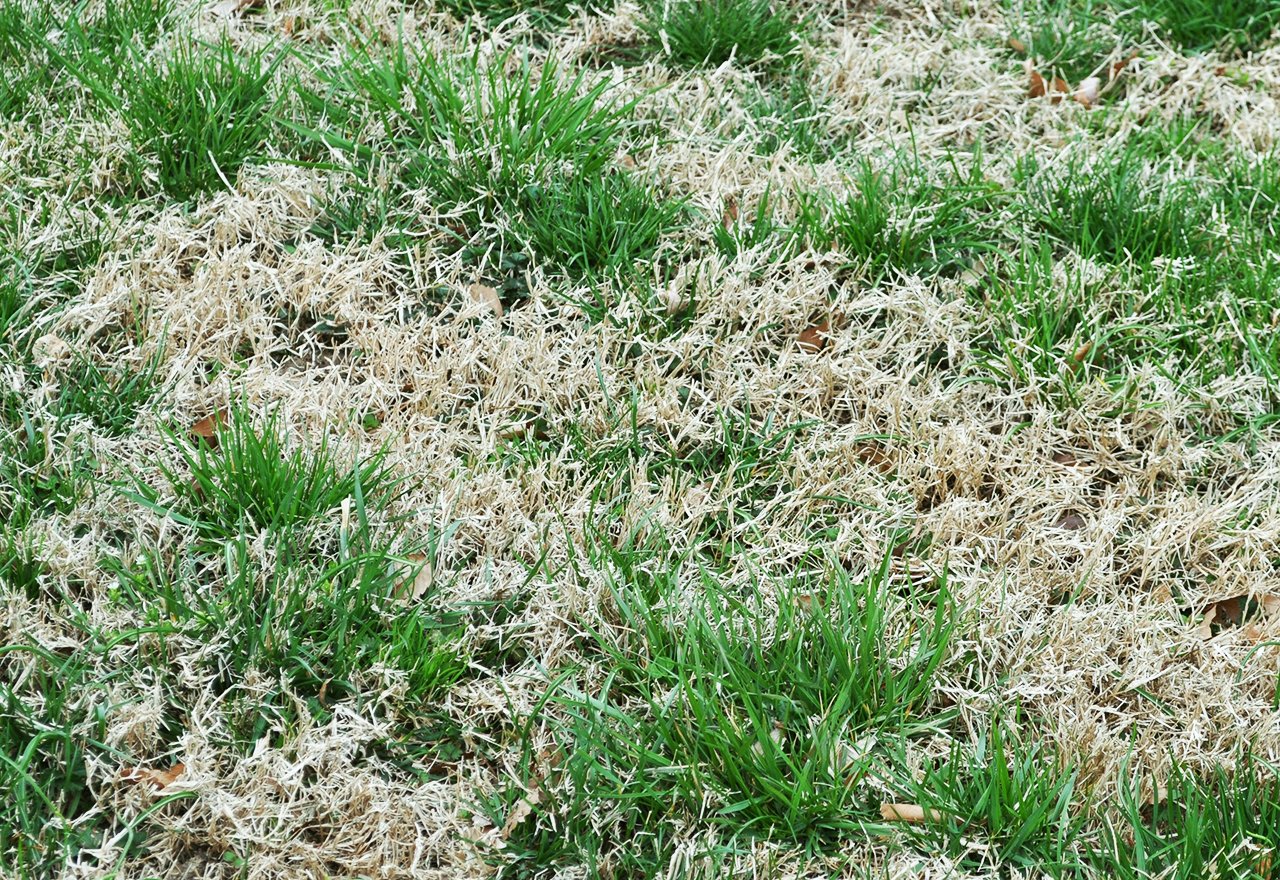A Warm Season Grass that is Green in Hot Weather and Brown in Cold

Nimblewill (Muhlenbergia schreberi) is a dense, fine-textured, perennial, warm-season grass that stays green in hot weather and turns brown at the first frost when the weather turns. Nimblewill grows best in moist, shady conditions but will grow in sunny, dry locations as well. It has a light to blue-green color and patches can look fuzzy compared to the rest of a green lawn. This weedy grass spreads through both seeds and by stolons (above ground roots) and tends to creep in round mats in the yard. Seed heads emerge during the middle of Summer and are spiky with each spike containing one seed.
Nimblewill is sometimes confused with either Creeping Bentgrass or Bermudagrass. To help distinguish these, know that Bentgrass is a cool-season grass and turns brown in the heat of Summer, a time when Nimblewill is thriving. With Bermudagrass, the difference is in the stolons and rhizomes, which are flatter and thicker than that of Nimblewill.
Nimblewill spreads through seeds and stolons, so it easily invades when neighbors have the same problem.
Nimblewill has a thick root system that tends to stay intact when pulled. This makes removal by hand pulling easy, compared to other weedy grasses. However, you must really remove the entire patch, as it can spread through stolons left behind. Do reseed with preferred grasses immediately (see below for our recommendations).
Traditionally, most people have resorted to using Roundup to kill Nimblewill before reseeding. We don’t love the idea of using Roundup, but if you do use go this route, be sure to do so when the plant is green and actively growing, rather than when it has turned brown. Spraying when Nimblewill is brown and dormant will not work and is a needless use of a chemical. A newer, less toxic herbicide made from the bottlebrush plant, Tenacity, is now available that may also suppress Nimblewill without killing the desirable grasses around it.
Hand pulling or digging out a patch and adding some new soil and seed is a good way to keep small patches from becoming big patches.
Nimblewill does best in poorly-drained soils that stay moist. We like to recommend Liquid Aeration in the Spring and Fall to help loosen the soil. This will also reduce thatch and encourage grass roots to grow deeper. As an added bonus, more air in your soil will encourage more microorganisms and a larger biota including earthworms and insects, making your soil richer and healthier. Core Aeration is not great to do because it will spread the Nimblewill by moving the plugs around the lawn.
If your lawn has a lot of different grasses and you’re looking for uniformity, your best choice might be to reseed all of your grass with a Lawn Renovation. Sometimes it’s just best to start over. If you'd like professional intervention, we can help with this service.
Prevention is always the best medicine, so they say. It’s the same with weedy grasses in your otherwise unvaried lawn. Healthy, thick grass will out-complete Nimblewill every time. We have a few favorite Organic Lawn Care recommendations that we always share with customers. These tips will help your lawn stay green and out-compete weedy grasses as well as other weeds found in lawns.
First, we encourage ourOrganic Lawn Care customers to mow high in the growing season (3.5" – 4.5" high). This will encourage the roots of your grass to grow deeper, which means healthier grass, which in turn will out-compete turf weeds. If you have soil showing between your grass blades or thinner patches, we recommend Slice Seeding in the late Summer. This will thicken the lawn and prevent annual weeds from getting started. We also encourage customers to plant some Microclover in with their grass when seeding. Microclover infuses nitrogen into the soil naturally and therefore acts as a passive and ongoing fertilizer that will feed your soil. The Microclover we recommend is tiny and will not flower, but it will be bright green all Summer, so makes your grass look even more lush and healthy. The grass mixture we recommend Slice Seeding is our Tuff Turf Lawn Seed, which is a mixture of Turf Type Tall Fescue and Kentucky Bluegrass. This mix is great for our Midwest climate. If your lawn needs a bit more help, we like to add our Good Nature Earth Turf Spring fertilizer in the Spring. This fertilizer is great for increasing grass thickness.
